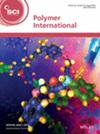聚合物类型对乙基纤维素、聚(乳酸-羟基乙酸)和聚(ε-己内酯)微颗粒共混物控制不同溶解度给药的影响
摘要
本研究的目的是研究聚合物类型对设计用于控制药物递送的聚合物微粒混合物的影响。采用溶剂蒸发法制备了含有单一药物(盐酸心得安[Pro]或卡马西平[CBZ])和不同溶解度药物(Pro和CBZ)的微颗粒共混物。采用水包油法和水包油法制备了第一乳状液和第二油相。采用乙基纤维素(EC)、聚乳酸-羟基乙酸(PLGA)和聚ε-己内酯(PCL)在二氯甲烷(7.5% w/v)中的溶液制备了三种不同的初乳。三种不同的二次油相为7.5% w/v的EC、PLGA和PCL在二氯甲烷中的溶液。将第一种Pro乳剂(油包水)和第二种Pro乳剂(油包水)分散在外水相中(适用于同一种药物),将第一种Pro乳剂(油包水)和第二种CBZ油相(适用于不同药物)分散在外水相中,相同药物和不同药物的分散时间间隔(DTI)分别为0和60 min。用SEM对共混物的形貌进行了表征。用粒度分析仪测量平均粒度。考察了其包封率和在pH 7.4的磷酸盐缓冲液中的体外释药情况。含有单一药物的微颗粒混合物与常规微颗粒和微颗粒混合物相比,Pro的释放速度较慢(DTI为0分钟)。相反,不同溶解度的共混物对Pro和CBZ的释放率相似(DTI为60 min)。28 d后的体外释药研究表明,EC微颗粒与DTI共混60 min(61%)的Pro释放比EC微颗粒与DTI共混0 min(83%)的Pro释放慢;PCL微颗粒与DTI共混60 min(48%)的Pro释放速度慢于PCL微颗粒与DTI共混0 min (75%);与DTI共混60 min(74%)相比,与DTI共混0 min(88%)的PLGA微粒子释放速度慢。水包油包水(Pro)和油包水(CBZ)体系在DTI为60 min、搅拌时间为4 h时制备的微球粒径大于DTI为0 min时制备的微球粒径。体外释药研究表明,EC微颗粒共混物28 d后CBZ的释放量(69%)比Pro的释放量(53.5%)快。PLGA微颗粒共混物28 d后,CBZ的释放量为92.5%,比Pro的释放量(81%)快。PCL微颗粒共混物28 d后的药物释放显示,CBZ的释放量(60%)比Pro的释放量(33%)快。这一观察结果可能归因于二次乳状液或油相与来自一次乳状液的固化微颗粒之间的相互作用,其中二次乳状液或油相阻塞并包裹了固化微颗粒表面的孔隙。综上所述,聚合物类型显著影响溶剂蒸发法制备的微颗粒共混物的药物释放谱。©2025化学工业协会。



The objective of this study was to investigate the impact of polymer type on polymeric microparticle blends designed for controlled drug delivery. Microparticle blends containing a single drug (propranolol HCl [Pro] or carbamazepine [CBZ]) and blends with drugs of differing solubilities (Pro and CBZ) were prepared using the solvent evaporation method. The first emulsion and second oil phase were prepared by the water-in-oil-in-water and oil-in-water methods. The three different first emulsions were a solution of ethyl cellulose (EC), poly(lactic-co-glycolic acid) (PLGA) and poly(ε-caprolactone) (PCL) in dichloromethane (7.5% w/v). The three different second oil phases were 7.5% w/v solution of EC, PLGA and PCL in dichloromethane. The first Pro emulsion (water-in-oil) and second Pro emulsion (water-in-oil) were dispersed in an external aqueous phase (for the same drug), while the first Pro emulsion (water-in-oil) and second CBZ oil phase (for different drugs) were dispersed in an external aqueous phase, with a dispersion time interval (DTI) of 0 and 60 min for the same and different drugs. The morphology of the microparticle blends was characterized by SEM. The mean particle size was measured with a particle size analyzer. The encapsulation efficiency and in vitro drug release in phosphate buffer (pH 7.4) were also investigated. Microparticle blends containing a single drug exhibited slower release rates of Pro compared to conventional microparticles and microparticle blends (DTI of 0 min). Conversely, blends with different solubilities showed similar release rates for both Pro and CBZ (DTI of 60 min). In vitro drug release studies after 28 days showed that the Pro release from EC microparticle blends with DTI 60 min (61%) was slower than from EC microparticle blends with DTI 0 min (83%); the Pro release from PCL microparticle blends with DTI 60 min (48%) was slower than from PCL microparticle blends with DTI 0 min (75%); and the Pro release from PLGA microparticle blends with DTI 60 min (74%) was slower than from PLGA microparticle blends with DTI 0 min (88%). The size of the microparticle blend prepared as a water-in-oil-in-water (Pro) and oil-in-water (CBZ) system with DTI of 60 min and stirring time 4 h was larger than those prepared with a DTI of 0 min. In vitro drug release studies from EC microparticle blends after 28 days revealed that the CBZ release (69%) was faster than Pro release (53.5%). Drug release from PLGA microparticle blends after 28 days revealed that the CBZ release (92.5%) was faster than Pro release (81%). Drug release from PCL microparticle blends after 28 days revealed that the CBZ release (60%) was faster than Pro release (33%). This observation may be attributed to interactions between the secondary emulsion or oil phase and the solidified microparticles from the primary emulsion, wherein the secondary emulsion or oil phase blocked and coated pores on the surface of the solidified microparticles. In conclusion, polymer type significantly influences the drug release profile from microparticle blends prepared by the solvent evaporation method. © 2025 Society of Chemical Industry.

 求助内容:
求助内容: 应助结果提醒方式:
应助结果提醒方式:


